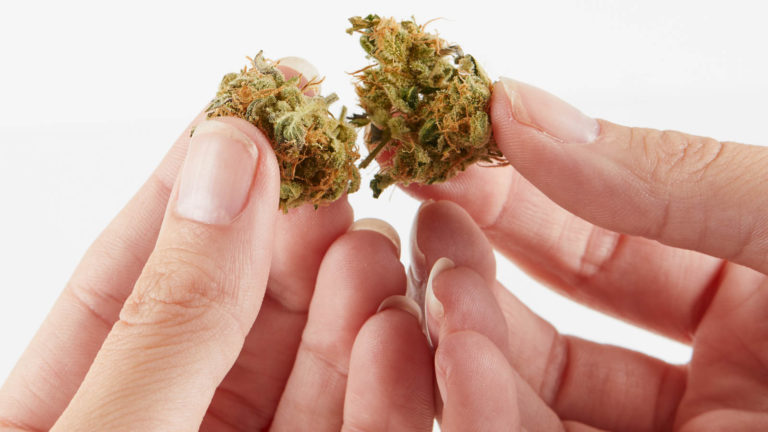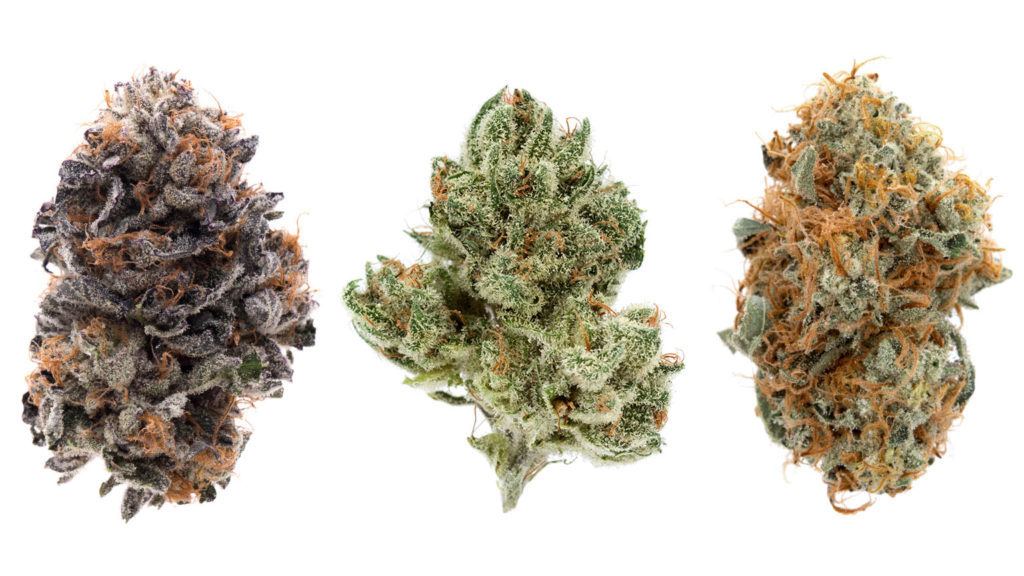In botanical terms, strain once meant offspring or descendants from specific plants, though this use has fallen out of favor. It's a more common and accurate term in microbiology and biology where it means a genetic variant, like the delta strain of the COVID-19 coronavirus. In the cannabis industry, strain is used interchangeably with cultivar or variety. Most cannabis consumers would probably define a strain by factors including botanical lineage, appearance, chemical profile, and accompanying effects.
The term is essentially slang for a particular variety of the cannabis plant; cultivar (a portmanteau of cultivated variety) is the accurate term that's preferred by those interested in cannabis cultivation. Popular strains change over time but classics include Jack Herer, Sour Diesel, and GSC (formerly Girl Scout Cookies).
Photo by: Gina Coleman/Weedmaps
More about cannabis strains
In horticultural and botanical circles, cultivar has become the preferred term to delineate the smell, flavors, yield, perceived pharmacological effects, and other distinct characteristics of a cultivated plant variety. The term cultivar only applies to cultivated varieties that were grown agriculturally. Wild cannabis native to its location is called landrace.
What's in a strain name?
Strain names frequently describe the lineage of a variety, a major aromatic component, or a possible effect. As a result, strains are often marketed based on the characteristics that their names advertise. Both Afghani and OG Kush are strain names that denote their origins (Afghanistan and the Hindu Kush mountain range, respectively), Tangie and GSC allude to their respective aromas, and Amnesia Haze is meant to convey how the strain might make you feel.
If you go to a dispensary and say you're looking for an uplifting cerebral high and sweet flavors, the budtender may offer you Blue Dream because it's a popular strain with a reputation for sweet berry flavors and uplifting effects. But you may get home and smoke that Blue Dream only to find yourself in heavy couch lock, tasting nothing but herbal earthiness. That's because strain names are not reliable in predicting effects, flavors, or medicinal benefits. In other words, a strain name is more or less a marketing message.
OG Kush, for example, is one of Southern California's most popular strains and it can be found in nearly every dispensary. But the effects of an OG Kush from one dispensary to the next can be completely different. A strain's characteristics can vary greatly from grower to grower. Different growing, harvesting, and processing conditions inevitably result in varying cannabinoid and terpene contents. So your best bet at finding the flower that works for you is to buy based on chemical composition and possible effects described by the brand or cultivator that grew it, rather than the strain name alone. In the end, your own unique body chemistry, including your endocannabinoid system, combined with the chemical composition of the flower will determine your experience of cannabis.
 Photo by: Gina Coleman/Weedmaps
Photo by: Gina Coleman/WeedmapsImage lightbox

What's in a descriptor?
When descriptors are added to a strain name, they can provide a bit more information about the variety. For example, Bubba Kush and Pre-98 Bubba Kush are variations on the original OG Kush cultivar. Bubba Kush is named after its breeder, who crossbred OG Kush with a Northern Lights variety. Pre-98 Bubba Kush delineates the variety of Bubba Kush that existed before the cultivar took off and spread to other breeders. More recently, hemp or high-CBD varieties have increased in popularity and been crossed with existing cultivars, so you might see something like Bubba Kush Hemp, for example. While these descriptors aren't necessarily going to tell consumers everything they want to know about a strain, they are helpful in differentiating between horticultural variations on a particular variety.
Bottom line
While it's fine to have a favorite strain, or several, just be aware that not all strains bearing the same name are identical. Flavor and effects can vary significantly among different cultivators and brands or even where the strain was grown and how. If you find a cannabis strain that delivers exactly what you're looking for, take note of the brand and where you bought it to have the best chance of repeating that experience.

